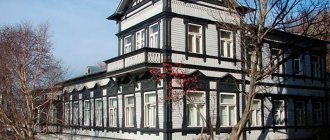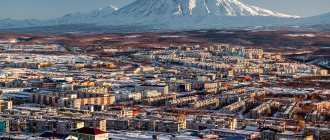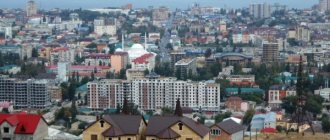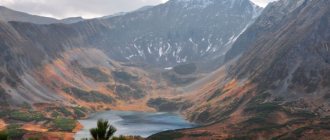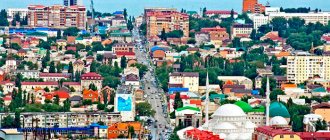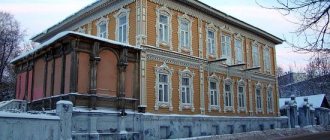General information and history
Petropavlovsk-Kamchatsky is a Russian outpost on the Kamchatka Peninsula, a city with a unique history and an even more unique location. The city is located on the shores of the Avachinskaya Bay of the Pacific Ocean, and is at the same time the base of the Russian Pacific Fleet.
View of Petropavlovsk-Kamchatsky from Nameless Volcano
Petropavlovsk-Kamchatsky is one of the oldest cities in the Far East. The first Cossacks arrived here in 1697. Here they founded a fort and laid out storehouses. For more than forty years, no new Russians arrived in Kamchatka, until in 1740 an expedition led by Alexei Chirikov and Vitus Bering on two ships “St. Apostle Paul” and “St. Apostle Peter” arrived to explore Kamchatka. The names of the ships eventually gave the name to the fort. It became Petropavlovsk.
Forty years later, Petropavlovsk was visited by two English warships Discovery and Resolution as part of John Cook's Third Around the World Expedition. Since then, all round-the-world regattas have anchored off the coast of Avacha Bay.
In 1812, the Peter and Paul fort received the status of a city and the name “Peter and Paul Harbor”. In the same year, the sovereign approved the “New Regulations on Kamchatka,” according to which a specially appointed governor-general was to govern the peninsula. Peter and Paul Harbor was chosen as the place for the residence of such a high rank.
View of Petropavlovsk-Kamchatsky
In 1849, the Kamchatka region was formed. The regional center became the Peter and Paul Harbor.
Directly from Petropavlovsk-Kamchatsky to Moscow is 8400 km. The real road would probably be 10,000 km, maybe more. How long would the soldiers march? How long would the carts travel? If the soldiers of central Russia went to rescue their Far Eastern comrades, they would have met a message about the end of the war somewhere in the area of modern Novosibirsk.
Thank God, no one had to help. The Far Easterners showed themselves to be brave warriors and defended the Peter and Paul Harbor in heroic battles. In memory of the brave soldiers, a chapel was erected on Nikolskaya Hill and a mass grave was made.
More than a century and a half later, in 2011, Petropavlovsk-Kamchatsky was declared the “City of Military Glory.” The reward found the hero, it’s just a pity that it’s so late.
18th century engraving depicting Petropavlovsk-Kamchatsky
Petropavlovsk-Kamchatsky
City center. Almost all the city’s attractions are located in the Avachinskaya Bay area. There is an observation deck, the only city theater, the government of the Kamchatka Territory, Lenin Square with Lenin the Batman, an art gallery, the Regional United Museum and the pedestrian zone of the Ozernovskaya Spit.
From Ozernovskaya Spit there is a view on one side of Avachinskaya Bay, and on the other - of Lake Kultuchnoye and three domestic volcanoes: Avachinsky, Koryaksky and Kozelsky . From here you can go to the pebble beach or the lake.
The area of Ozernovskaya Spit is the connecting link between the lake and the bay. Songs from old films are played here, children ride bicycles, and adults swing on the city swings. In summer it looks like a southern resort town.
Across the road is Lenin Square, also known as a parking lot. Among the cars and advertising signs stands the militant Lenin - his cape develops like a superhero's, so the townspeople call him Batman.
Observation platforms. There are two main observation platforms in the city - Nikolskaya and Mishennaya Sopka.
Nikolskaya Sopka. Nikolskaya is located in the very center, in the Avacha Bay area. The hill can be divided into several parts: the ascent, the park (also known as the lookout) and the Maksutov battery. In 2022, the park was improved: now there are models of volcanoes, historical information about the city, new benches and platforms, and even signs for the best place to take a photo. The climb up the hill is simple. As soon as you learn everything about the development of Kamchatka, go down to the monument to the “deadly” battery of Prince Maksutov. During the Crimean War in 1854, the Anglo-French squadron tried to capture the port of Peter and Paul. A local garrison of 988 men fought against 2,700 soldiers. The third, “deadly” battery under the command of Alexander Maksutov was located in the most unprotected place of the battle and suffered serious losses. Despite the numerical difference, the soldiers managed to defend the city. Since then, Petropavlovsk-Kamchatsky has been called the Far Eastern Sevastopol, and in memory of the heroism of the defenders, a replica of a military battery of 8 cannons was placed at the battle site.
Target hill. Sopka Mishennaya is the highest point of Petropavlovsk-Kamchatsky, the observation deck here is located at an altitude of 382 meters. From here you can see the entire city, Avacha Bay, Khalaktyrskoye Lake and the Pacific Ocean. It’s more convenient to climb it by car, but you can also walk, so the way up will take about an hour and a half. At the top of the hill they built an observation deck in the shape of a crown; nearby you can book a paragliding flight.
Climate and ecology of Petropavsk-Kamchatsky
There are not many places in Russia where you can invite tourists. It is not only possible, but also necessary to invite tourists to Kamchatka. The nature here is truly unique. The elevation difference in Petropavlovsk-Kamchatsky itself is 513.6 meters. The lowest point is the level of Avacha Bay. The highest is Mount Rakovaya.
In principle, the entire city stands on hills. There are practically no smooth roads. Constant ups and downs. There are practically no small cars with weak engines here, since they are impossible to drive.
Geographically, Petropavlovsk-Kamchatsky is located south of Moscow, but nevertheless the climate here is much harsher than in the capital. Summer is very cold. It is comparable in average temperatures to Norilsk and Arkhangelsk. Nevertheless, winter on the peninsula is very warm. It is even milder than winter in St. Petersburg. Temperature differences throughout the year are small. In August, the average daily temperature is +12.4 °C, and in January – 7.7 °C below zero. That is, the difference is only 20.1°C.
Precipitation in Kamchatka falls mainly in autumn and winter. In summer, the peninsula is not hot and very comfortable.
The lake inside the Gorely volcano is very similar to the volcanoes located on Easter Island
When talking about the climate of Petropavlovsk-Kamchatsky it is impossible not to mention seismic activity. The eastern coast of the Kuril Islands, Kamchatka and Japan are the most seismically active places on Earth. In the last century, there was one magnitude nine earthquake, two magnitude eight and ten magnitude seven.
The environmental situation in Petropavlovsk-Kamchatsky is quite stable. The air is poisoned mainly by motorists and two local thermal power plants. Since the city has only 181 thousand residents, and only every sixth of them is a motorist, thirty thousand cars are not capable of causing significant harm to the city’s nature.
The water in Achinsk Bay is, of course, dirtier than it was a hundred or even fifty years ago. The reason for this is outdated ships, from which fuel oil regularly leaks. There are no other global environmental problems either in the city or in the region.
Tips for staying in Petropavlovsk-Kamchatsky
Petropavlovsk-Kamchatsky is located on the Kamchatka Peninsula, where a rather harsh climate is observed all year round. The city is located on the coast, so strong winds are a constant phenomenon here. The maximum influx of tourists is observed in the summer; in winter there is a second tourist wave, but it is usually much weaker than the summer one.
Winter in Kamchatka is early - the first snow falls on the volcanoes already in September, in the city itself - in November. The temperature does not drop below - 10 degrees, precipitation is rare. In the cold season, the peninsula turns into a paradise for lovers of extreme recreation. There are several ski resorts here. For lovers of more exciting slopes, heli-skiing is organized - skiing or snowboarding down mountain slopes where there are no trails. Also in winter there is an opportunity to try out the slopes of volcanoes located near Petropavlovsk-Kamchatsky. The city also offers more relaxing winter activities, such as snowmobiling or dog sledding.
Alpine skiing is one of the popular types of active pastime in Kamchatka
One of the most popular events held in the city in winter is the Beringia sled dog race. Only professional mushers participate in them, but anyone can watch the competition.
The main event of the Kamchatka winter is the traditional sled dog race "Beringia"
The off-season is a quiet time on the peninsula. The weather is not conducive to visiting attractions, but skiing is no longer possible. In March and April, frosts and snowfalls are still possible, as well as in the last months of autumn. The active tourist season begins in summer, because it is during this period that it is possible to visit the most important attractions of the peninsula: volcanoes, the Valley of Geysers. However, the air temperature can hardly be called truly summer: here it rarely exceeds +20 degrees, in addition, precipitation in the form of rain is not uncommon. During the warm season, tourists can enjoy such activities as horse riding, fishing, river rafting, surfing, off-road ATV riding and, of course, climbing volcanoes.
The coast is very cold even in the summer, so surfing will require a thin wetsuit
As a rule, people come to Petropavlovsk-Kamchatsky for several days, because even two days are not enough to explore all the fascinating places in the city and its surroundings. There are many hotels in the city - about two hundred; guest houses, boarding houses and rental apartments are also available to tourists. You can get around the city by public transport, here it is represented by buses and minibuses.
When planning to go to conquer mountain peaks during your stay in the city, you need to take the following things with you:
- Backpack. You will need it for climbing.
- Boots with hard corrugated soles and impregnation against getting wet. The corrugated sole is necessary for moving over stones, slag and snowfields. Impregnation from getting wet - to protect shoes while traveling in the rain, early in the morning, when the dew has not yet had time to dry, while crossing streams, snowfields, while rafting down mountain rivers. If you buy new shoes, then before leaving for Kamchatka you need to break them in well. Otherwise, in the mountains you risk severely rubbing your feet.
- Warm windproof waterproof pants and jacket with a hood. In the mountains, even at the height of the summer season, snowfields remain, thick fog can suddenly fall (clothes get wet instantly), rain with strong gusts of wind is no exception. Having a hood on the jacket is a big advantage.
- Thermal underwear. The weather in Kamchatka is unpredictable. Therefore, you can never have too much warm clothing, because you can take it off at any time. Thermal underwear is also comfortable and comfortable to sleep in while in a tent in a sleeping bag.
The weather in Kamchatka is unpredictable and can change very quickly - Gloves, warm mittens. They will protect your hands from the cold and from cuts on slag or ice.
- Sunglasses. They will protect your eyes from the glare of the sun on the surface of the water and on the snow.
About security on the peninsula
Kamchatka still remains a wild land. You can often see bears walking along the trails. For your own safety, you should not approach the animal, open car windows, or try to photograph the bear. Another important tourist rule on the peninsula is to hike to the mountains or volcanoes only when accompanied by a guide. This way you will ensure a safe and comfortable stay:
- they will tell and show you all the most interesting things;
- before the hike, you will register with the Ministry of Emergency Situations, which will help in an emergency - if you get lost, they will definitely look for you;
- you will be provided with the necessary vehicle that can travel off-road.
There is snow in the mountains of Kamchatka almost all year round
Population of Petropavsk-Kamchatsky
The indigenous inhabitants of the Kamchatka Peninsula are the Kamchadals, or as they are also called, the Itelmens. From time immemorial, Kamchadals settled along the banks of rivers rich in salmon, fished, and hunted in the forests.
There are very few Kamchadals in the total mass. About 10% of residents of Petropavlovsk-Kamchatsky. The rest of the people are Russians, Ukrainians and Armenians.
The indigenous inhabitants of the peninsula are the Kamchadals
In principle, the population is quite calm. You can walk along the evening streets without fear. The average age of a resident of Petropavlovsk-Kamchatsky is 44 years, with the average life expectancy on the peninsula being 57 years.
There are few young people; after school they move west to larger cities, where they try to stay. The most chic thing is to leave Kamchatka for Moscow. Few people succeed in making such a move. Happiness for many is Khabarovsk and Vladivostok. Krasnoyarsk and Novosibirsk are also considered prestigious cities.
At the moment, more people die in Petropavlovsk-Kamchatsky than are born. The city reached its peak population in 1989, when 286 thousand people lived in Petropavlovsk-Kamchatsky. Now the numbers are much more modest, just over 181 thousand at the beginning of 2022.
Approximately a quarter of residents have higher education. Most often, it is a correspondence course obtained at one of the local branches of universities. In terms of education, city residents are noticeably behind the leading regions of the country and are not leaders even in the Far East.
Districts and real estate of Petropavsk-Kamchatsky
From time immemorial there were no districts in Petropavlovsk-Kamchatsky. At the beginning of the twentieth century, no more than a thousand people lived in the city. Of course, decades later the situation changed, but zoning never took root. In 1973, Petropavlovsk-Kamchatsky was divided into Oktyabrsky and Leninsky districts, and in 1988 the districts were abolished.
Map of Petropavlovsk-Kamchatsky
Now the city is divided into microdistricts, which are usually separated from each other by mountains or bodies of water. There are microdistricts “Fourth Kilometer”, “Fifth Kilometer”, “Sixth Kilometer”, Northeast, Horizon, Silhouette, Center. In addition, the city includes nearby villages: Nagorny, Avacha, Zaozerny, Radygino, Dalniy, Khalaktyrka, Mokhovaya, Chapaevka, Zavoiko.
There is no such thing as a central street in Petropavlovsk-Kamchatsky. Karl Marx Avenue and Sovetskaya Street can compete for the right to be called this way. Due to the city's hills and uneven terrain, the city occupies a huge territory, but the buildings are very sparse, so it takes a long time to get to socially significant objects from almost anywhere in Petropavlovsk-Kamchatsky.
Central district of Petropavlovsk-Kamchatsky
Without exaggeration, we can say that Petropavlovsk-Kamchatsky is located in one of the most beautiful places in the world. All around is the ocean, volcanoes, bays, hills. From the balcony of an ordinary house here you can see such beauty that you have never even dreamed of in any five-star resort. With such wonderful nature, Petropavlovsk-Kamchatsky remains one of the ugliest and ugliest cities not only in Russia, but probably in the world. The residents of Petropavlovsk absolutely do not appreciate the beauty in which they live; even their houses look like temporary huts or barracks because of this.
Local residents here sew up the walls with huge metal sheets, this is done because it blows strongly in the rooms located on the windward side. Vetra, by the way, be healthy in Petropavlovsk-Kamchatsky.
In general, there are no normal hotels in the city. The only decent hotel is located half an hour from the city center, among the pine trees. There are no amenities of civilization near the hotel, but there is a submarine base.
Petropavlovsk residents live every day in anticipation of tremors, but they never come. Periodic earthquakes spoil everything for the townspeople. The only positive thing they bring is beautiful bay windows on buildings, but here they are used not for beauty, but for the sake of lateral strength. Each apartment in a Petropavlovsk apartment building has a shockproof ledge with access to a small balcony. People call this ledge and this balcony the captain's bridge.
There are excellent conditions here for skiers, snowboarders, and lugers. There was no such thing as Krasnaya Polyana or the Grand Canyon. We need an active volcano - please. Valley of Geysers? We have it too. But no. Nobody needs anything. Of course, going to the Kamchatka resort will not be a cheap pleasure, but there are moneybags who vacation in Chile and climb the Himalayas. Why don't all these people come to Kamchatka?
If suddenly some crazy traveler ends up in Petropavlovsk-Kamchatsky, then the best place for him to live is to choose the Central Microdistrict, or, for short, the center, since all the city’s most important department stores and shops are concentrated there. It is from here that transport departs to all other settlements.
Petropavlovsk-Kamchatsky. City and port on the edge of the world (33 photos)
Earthquake-resistant five-story panel buildings, desolation and beautiful volcanoes.
What does the city that is the first in Eurasia to see the sun look like? At the beginning of May we saw the main city of Kamchatka bleak.
Petropavlovsk-Kamchatsky stretches between Avachinskaya Bay and the hills, smoothly flowing from one slope to another, like honey mushrooms along stumps in an autumn mushroom forest. The grey-brown city, sprinkled with black volcanic sand, clings to the hills and is not entirely visible, it seems, from any point.
But in any part of the city, looking between the houses, you will see the “home” volcanoes – Avachinsky and Koryaksky. And this, alas, is the best thing in the city. Petropavlovsk-Kamchatsky does not captivate the imagination - earthquake-resistant five-story panel buildings, broken roads, desolation and colorful advertising banners filling the gray city. And volcanoes dominate over this entire gloomy and unkempt city, reminding you why you are here.
And, as a symbol of the maritime climate and, therefore, humidity not lower than 70%, laundry is drying in the wind. The last time I saw such linen flagpoles was in Batumi, where nothing dries either, but the climate is much milder. In Petropavlovsk there is even such a wonderful, but probably not unique phenomenon as neighbors on a clothesline.
Cars prepared for non-children's off-road use are another, much more specific symbol of the city. The local vehicle fleet is represented mainly by all-wheel drive vehicles, but I have never seen so many dirt mixers anywhere else.
The most elegant place in Petropavlovsk-Kamchatsky is Kultuchnoye Lake and the embankment of Avachinskaya Bay. Here is a revelry of cheerful young people performing aerobatic maneuvers on bicycles while coffee in paper cups gets cold at the foot of the Lenin monument. On the other side is the Vilyuchinsky volcano, hiding its head in the clouds, ships are frozen in the bay, and the wave is quietly splashing over the pebbles.
The hotel was chosen to have “a view.” And they chose “Geyser”. Of course, no stream comes from the ground here (and thank God), but the hotel, located on the slope of one of the hills, has an undeniable advantage over its fellows - a view of Avachinskaya Bay and the Vilyuchinsky volcano. Seriously, where else, when you open your eyes in the morning, can you look out the window and, without getting out of bed, watch how the low gray sky makes the water in the bay look like mercury, and the sugar loaves of the hills lightly touch the heavy clouds that are almost falling down with their fluffy heads?!
Well, and a healthy soft bed, on which two of our backpacks can easily fit - that very element of comfort that you especially appreciate after several days in a tent. And considering that the hotel has its own brewery, where they brew excellent unfiltered beer that goes well with a variety of smoked fish, we made a very right choice.
We spent some time searching for the old city, but found it quite by accident at the foot of the Hill of Love. The historical part of the city consists of several wooden two-story houses in a state ranging from “painted gray” to “save me, I’m a historical heritage.”
I wonder what this craving for gray is connected with? The city, through the mouth of Chaplin, asks to remember it as a person of color.
Naturally, the center of Petropavlovsk-Kamchatsky is located near the port. Actually, Petropavlovsk-Kamchatsky is also the port of the same name, which is also the metallic heart of the city. Yes, the heart here is a rusty, but more than alive engine with blades on which water dries and becomes salt.
The city does not invite you to return and is not conducive to walking. But in addition to gloomy shift workers and unfriendly, dark gray townspeople, there live such bright, light and beautiful guys, whose hearts are made to beat faster by the sparkling slope or the salty splashes of the ocean. You can chat happily with them for hours on end, without noticing how morning gives way to night, they will show you how to take your wave.
Infrastructure condition
If you imagine Petropavlovsk-Kamchatsky as a big dog, and the city infrastructure as a dog’s paws, then the dog will turn out to be lame. The city has terrible roads. Nobody wants to lay more durable concrete, preferring asphalt to it. Light seismic tremors are common in this area. As a result, the asphalt is always cracked. Where there are cracks, holes eventually appear. Nobody patches holes for a long time. They collect taxes from residents regularly, but do not use them for their intended purpose. Maybe they are building an underground bunker with these funds? Where were all the townspeople able to escape after the end of the world? Unknown.
All utilities in Petropavlovsk-Kamchatsky are very expensive. Electricity costs 3.47 rubles per kilowatt. Hot water - 18 rubles per cubic meter, cold water - 6 rubles. Such prices are explained by the fact that no one wants to receive energy from wind in Kamchatka. The energy of sea tides is also not used in any way. Only thermal power plants remain. City boiler houses cannot cover the entire city. Many microdistricts have their own stokers, where people who did not do well at school work. Stokers create a lot of smoke in the sky and, in unfavorable winds, can blow into someone’s apartment.
The main type of transport in the city is a bus, and a small bus. The bus traffic pattern resembles the sun. All routes depart from the city center, and two more run along the perimeter of Petropavlovsk-Kamchatsky. In fact, for a small city located on a large territory it is very difficult to come up with something more convenient. The grooves, by the way, are very old and often break down, and sometimes they can’t handle the climb uphill.
There are enough kindergartens, as well as schools. At the end of the eighties, there were a hundred thousand more people living in the city and the entire infrastructure was built for them. Now there are even empty kindergartens. This is not Moscow, the vacant premises here are of no interest to anyone. If you walk around the city, you can count several dozen empty buildings.
The sheets used to decorate houses rust over time.
Despite this, real estate in the city is quite expensive. Rent an apartment daily on Khreshchatyk, in Kyiv, costs the same as in Petropavlovsk-Kamchatsky. Kamchatka does not yet reach Moscow prices, but there will be more. A one-room apartment without any frills costs an average of two million rubles in the city. A two-room apartment costs five hundred thousand more, a three-room apartment costs a million.
Enterprises and work in Petropavlovsk-Kamchatsky
The city-forming enterprise of Petropavlovsk-Kamchatsky is the ocean. Without him, no one would have lived here long ago, despite all the beauty. OJSC Kamchatrybprom, Okeanrybflot, the fishing collective farm named after Vladimir Lenin, CJSC Akros and many small companies operate in the seafood market. The entire industry is controlled by the mafia. Now, however, they call themselves businessmen, but some fifteen years ago, when things were still turbulent, these same people shot at each other, trying to grab a bigger piece of the pie.
It’s a shame that most Kamchatka seafood is exported abroad, and imported into Russia already processed. Failure to develop the full range of fish and seafood production and processing is a disservice not only for Petropavlovsk-Kamchatsky, but also for the entire country. During the fishing season, hundreds of fortune seekers come to the city to hire a sailor and set sail. Sailors often undermine their health on these trips, but at the same time earn very good money.
Volcanic eruptions in Petropavlovsk-Kamchatsky are visible even on a bus
Not long ago, the mining industry began to develop in Kamchatka. Gold, platinum, nickel and silver are mined there. Outsiders are not allowed into the mines, since for a month of unskilled labor there you can get more than a hundred thousand rubles, which is a very good amount for Kamchatka.
Where to go with a child in Petropavlovsk-Kamchatsky
Children, as well as their parents, should visit the exhibition at the USSR Museum. Here you can feel like a Soviet citizen, immerse yourself in the life and history of the disappeared state. The child will see pioneer ties and badges, study Soviet propaganda posters, touch typewriters, black-and-white portable televisions and film cameras, which have already become a rarity. The museum also has an old gramophone on which you can listen to real vinyl records. Girls will be able to get acquainted with Soviet cosmetics, and boys will most likely be interested in the USSR automobile industry.
Each child will receive an “Alenka” chocolate bar as a gift from the museum.
Information for visitors:
- address: Pogranichnaya street, building 48;
- open: 10:00–16:00, closed Monday;
- tickets: up to 100 rubles.
Another exhibition that is worth visiting with the whole family is the Vulcanarium Museum. Here children can learn a lot of interesting things about volcanoes and geysers. The museum's exhibits include samples of solidified lava found in different parts of the planet, unique minerals that can only be found near volcanoes, as well as photographs depicting the largest volcanic eruptions. In addition, the museum is equipped with an interactive exhibition where you can see how various natural phenomena are formed, and all exhibits here are allowed to be touched and turned on independently.
Museum "Vulcanarium" - the first Museum of Volcanoes in Russia
Information for visitors:
- address: Klyuchevskaya street, 34;
- open: 10.00–20.00;
- tickets: 1150 rubles, children under 16 years old - 750 rubles, children under 5 years old - free.
There are also several children's entertainment centers in the city, equipped with attractions, play areas, labyrinths and trampolines:
- “Far Away Kingdom” is located at: Pobeda Avenue, building 47;
- “Karabum” operates on Toporkova Street, 1A;
- "Tili-Mili" is located on Kosmichesky Proezd, 3A.
Crime
The most common crimes in Petropavlovsk-Kamchatsky are somehow related to poaching. In the 90s, the “earners” sorted things out among themselves. Since the 2000s, they have been fighting against law enforcement agencies. Unfortunately, the police in Kamchatka are very corrupt and they do not fight all poachers. Those who pay for their peace of mind do not experience any discomfort. The rest sometimes have to sweat, hiding from pursuit.
There have never been any high-profile contract killings in Petropavlovsk-Kamchatsky. Mostly only Mother Nature is stolen or robbed here, so we can summarize that the city, despite all its greyness, is quite calm.
